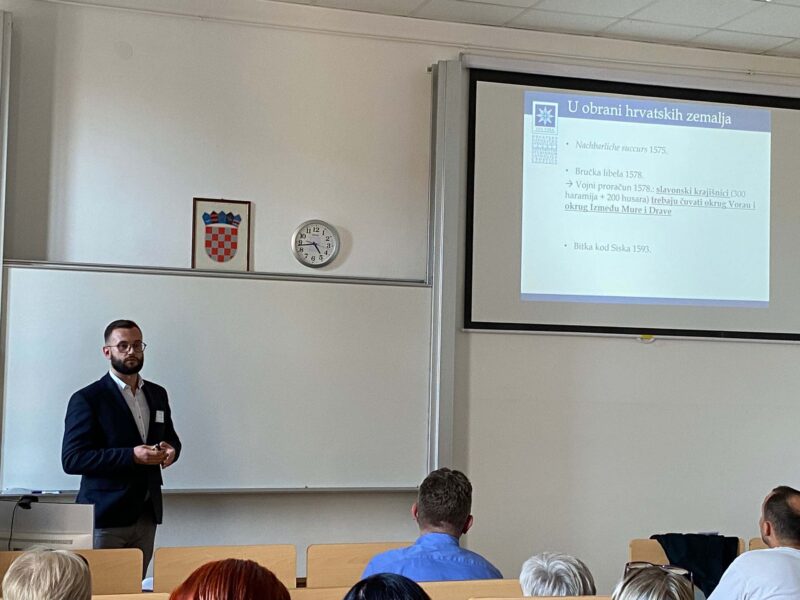Share
Dr Filip Hren Presents at the 7th Congress of Croatian Historians
Dr Filip Hren, Senior Assistant at the Department of History of the Catholic University of Croatia, gave a presentation on 25 September 2024 at the 7th Congress of Croatian Historians, held from 25 to 28 September at the Faculty of Humanities and Social Sciences of Josip Juraj Strossmayer University in Osijek.

In his presentation titled "Two Countries or One? Good Neighbourly Relations and the Defence of Croatia, Slavonia, and Inner Austria in the First Half of the 17th Century", Dr Hren examined how these lands were threatened and how they jointly responded to a new danger during the wars of the early 17th century.
As he explained, from the 15th/16th century onward, the growing Ottoman threat led to increasing mutual cooperation among Croatia, Slavonia, Styria, Carinthia, Carniola, and the County of Gorizia. Two particularly clear indicators of this cooperation are the decisions made at the Bruck Diet in 1578—which involved Inner Austrian lands directly in the governance of parts of the Croatian-Slavonian Kingdom—and the Battle of Sisak in 1593, where forces from Inner Austria and other Habsburg Hereditary Lands fought alongside the Ban’s troops.
In the first half of the 17th century, conflicts with the Ottomans changed significantly in nature, as their further expansion into Habsburg lands was halted. This period includes the end of the Long Turkish War and the Thirty Years' War, during which the Habsburg-Ottoman frontier became a secondary concern in the broader strategic considerations of both the Emperor and the Sultan. However, the involvement of segments of the Hungarian nobility—led by three princes of Transylvania—on the Ottoman side against Vienna introduced a new set of challenges for military cooperation between Inner Austrian and Croatian lands.
Dr Hren's presentation contributed to a better understanding of the complex geopolitical and military relationships in Central Europe during this pivotal historical period.





